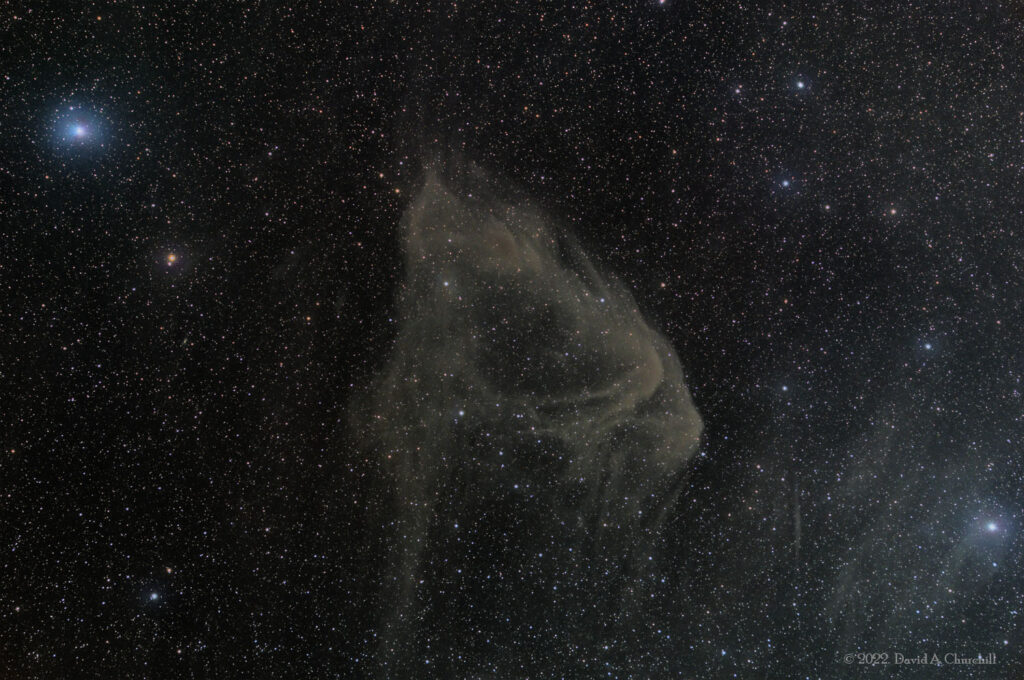Sh2-63
HII Region, Sagittarius
- Description
- Technical
- Links
Sharpless 63 (Sh2-63) is a beautiful nebula in the constellation Sagittarius. Also known as LBN 86 it is classified as an HII region. Deep exposures reveal a rich field, surrounded by the faint galactic cirrus. Some tiny background galaxies can also be seen around the field.
The “Catalogue of HII Regions”, by Stewart Sharpless, presented 313 HII regions north of declination -27º. Sharpless published the first “Sharpless catalogue” in 1953, which was then improved and continued with analysis of plates from the Palomar Sky Atlas, published in 1959. In its 63rd entry this nebula is catalogued, with a diameter of 55’.
Sharpless 63’s appearance is strikingly different from the red-H-alpha characteristic of emission nebulae. It looks a lot like a molecular cloud or even a dark nebula, where the gas and dust condense to form newborn stars, and is associated with MBM 158 and MBM 159 molecular clouds.
The “Catalogue of HII Regions”, by Stewart Sharpless, presented 313 HII regions north of declination -27º. Sharpless published the first “Sharpless catalogue” in 1953, which was then improved and continued with analysis of plates from the Palomar Sky Atlas, published in 1959. In its 63rd entry this nebula is catalogued, with a diameter of 55’.
Sharpless 63’s appearance is strikingly different from the red-H-alpha characteristic of emission nebulae. It looks a lot like a molecular cloud or even a dark nebula, where the gas and dust condense to form newborn stars, and is associated with MBM 158 and MBM 159 molecular clouds.
Telescope: Astro Physics 155EDF (TCC) f5.4
Mount: Astro Physics 1600GTO
Camera: FLI PL29050 / CFW2-7
Guider: Agena Starguide II / ZWO ASI178MM
Filters: Astrodon II 50mm LRGB
L: 50×5 mins = 250 mins, R: 24×5 mins = 120 mins, G: 24×5 mins = 120 mins, B: 24×5 mins = 120 mins
Total Imaging Time: 10h 10m
Data Imaged remotely over 3 nights during September 2022.
Imaged from Observatorio El Sauce, Chile, in partnership with Fred Espenak.
Data acquisition & Processing by David Churchill.
None

